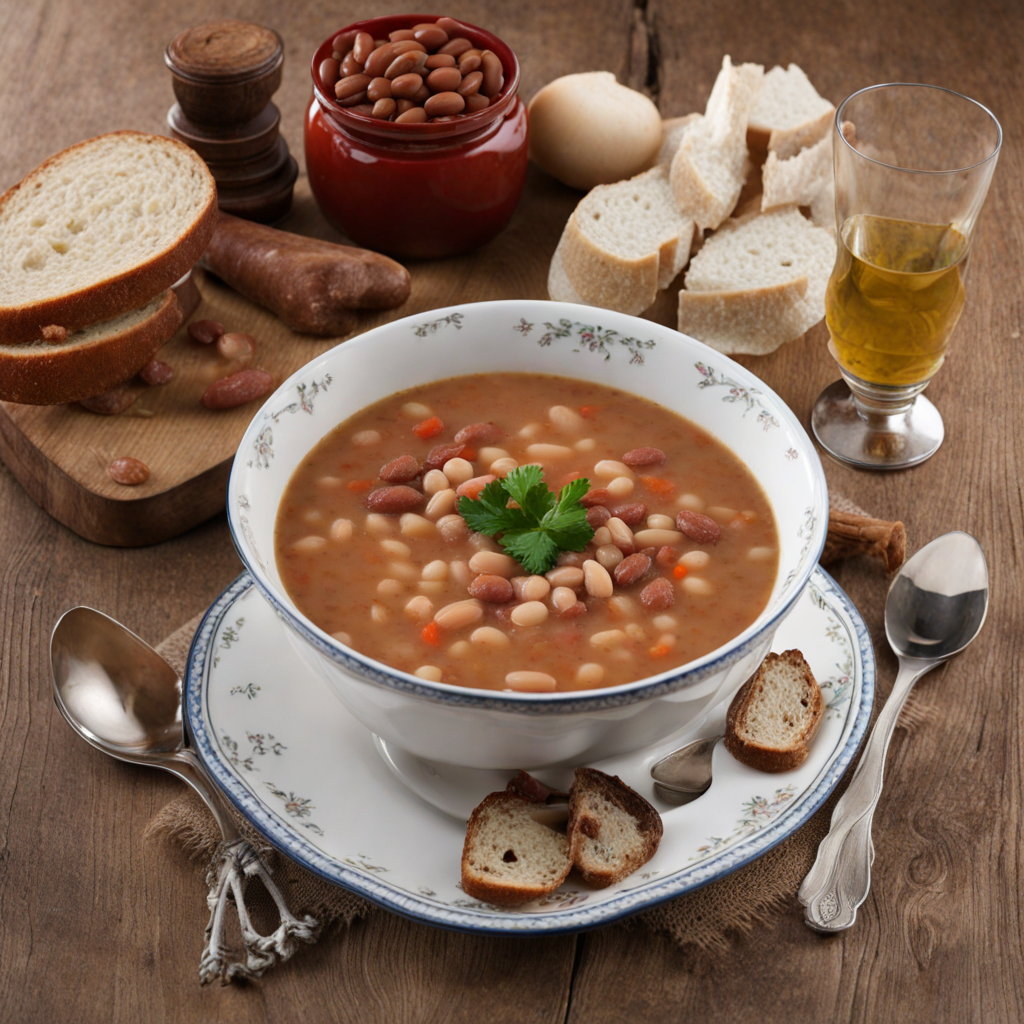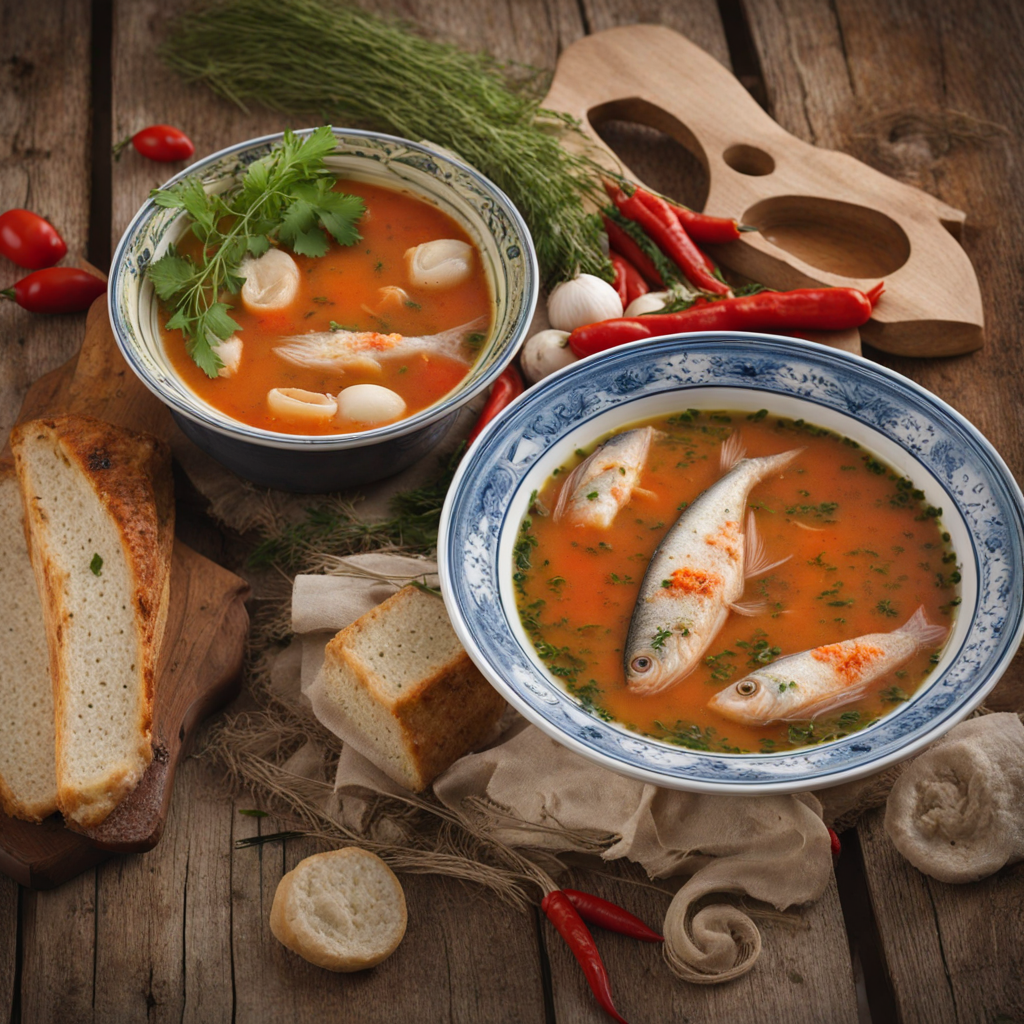Halinka
Halinka is a delightful Hungarian dish that combines the rich flavors of the region with a unique twist, making it a must-try for anyone seeking to explore new culinary experiences. At its core, Halinka features tender meat, typically pork or chicken, marinated in a blend of spices that often includes paprika, garlic, and herbs. This marination not only adds a depth of flavor but also ensures that the meat remains juicy and succulent during cooking. It is then slow-cooked or grilled to perfection, allowing the spices to penetrate deeply and create a mouthwatering aroma that tantalizes the senses. The dish is often served alongside traditional Hungarian sides, such as creamy polenta or buttery mashed potatoes, which complement the robust flavors of the Halinka. Fresh vegetables, such as sautéed bell peppers and onions, add a vibrant touch and enhance the overall presentation. Additionally, a drizzle of a tangy sauce, often made from sour cream and fresh herbs, elevates the dish, providing a creamy contrast to the spiced meat. This balance of flavors and textures makes Halinka a hearty and satisfying meal that warms the soul. Halinka is not just about the taste; it embodies the essence of Hungarian hospitality. Often enjoyed during family gatherings or festive occasions, it brings people together over shared plates and stories. The experience of savoring Halinka goes beyond just eating; it's about embracing the culture and traditions that come with each bite. Whether you're enjoying it in a cozy restaurant in Hungary or trying your hand at making it at home, Halinka promises to transport your taste buds on an unforgettable journey through the heart of Hungarian cuisine.
How It Became This Dish
The History of Halinka: A Taste of Hungary Halinka, a delightful dish hailing from the heart of Hungary, encapsulates the rich tapestry of Hungarian culinary traditions and cultural evolution. While not as widely known as goulash or langos, Halinka embodies the essence of Hungarian home cooking and the communal spirit of its people. To fully appreciate Halinka, one must delve into its origins, cultural significance, and its development through the ages. #### Origins of Halinka Halinka, primarily a type of savory pastry, has its roots in the rural kitchens of Hungary. It is believed to have originated in the early 19th century, during a time when the culinary landscape of Hungary was heavily influenced by various social and political changes. The Austro-Hungarian Empire had a profound impact on the gastronomy of the region, as culinary practices blended and evolved. Traditional Hungarian cooking was characterized by the use of simple, fresh ingredients, and Halinka was no exception. The name "Halinka" is thought to derive from the word "hal," which means "fish" in Hungarian, although the dish itself can encompass a variety of fillings. This connection to fish is particularly significant, as it reflects Hungary's geographical features, including its lakes and rivers, which provided abundant fish resources. Over time, however, Halinka has come to include a range of fillings, from meats and vegetables to cheeses, showcasing the adaptability of Hungarian cuisine. #### Cultural Significance Halinka is more than just a dish; it is a symbol of Hungarian hospitality and tradition. In many Hungarian households, preparing Halinka is a communal activity, often bringing families and friends together in the kitchen. This communal aspect is critical to its cultural significance, as food in Hungary often serves as a means of fostering connections and creating memories. In rural communities, Halinka is often served during gatherings, celebrations, or even during the harvest season, symbolizing abundance and community spirit. The dish is versatile enough to be enjoyed as a snack, appetizer, or even a main course, making it a staple at various social occasions. This adaptability highlights the practicality and resourcefulness inherent in Hungarian cooking, where no ingredient goes to waste. Additionally, Halinka is a testament to the preservation of culinary traditions in Hungary. As globalization has influenced food trends worldwide, traditional dishes like Halinka serve as a reminder of the importance of cultural heritage. Families often pass down their Halinka recipes through generations, ensuring that the flavors and techniques remain alive. This practice not only honors the past but also fosters a sense of identity among Hungarians, both at home and abroad. #### Development Over Time The development of Halinka has mirrored the broader changes in Hungarian society and culinary practices. In the early 20th century, as Hungary faced significant political and social upheaval, the food culture began to evolve. The influence of neighboring countries, such as Austria, Slovakia, and Romania, introduced new flavors and cooking methods, leading to a diversification of traditional recipes, including Halinka. During the mid-20th century, particularly after World War II, Hungary experienced a shift towards industrialization and urbanization. As more people moved to urban centers, traditional cooking practices began to adapt to the fast-paced lifestyle. Halinka, once a dish prepared in the countryside, found its way into urban kitchens, albeit with some modifications. Convenience became a priority, leading to the rise of pre-made pastry dough and frozen fillings, which allowed busy families to enjoy Halinka without extensive preparation. Despite these changes, many families continued to hold on to their traditional recipes, often incorporating modern ingredients while maintaining the essence of the dish. The late 20th century saw a renewed interest in traditional foods, spurred by a growing movement towards organic and locally sourced ingredients. This resurgence has led to a revival of Halinka in both home kitchens and restaurants, where chefs are experimenting with innovative fillings and presentation styles while honoring the dish's heritage. In recent years, Halinka has gained popularity not only within Hungary but also among international food enthusiasts. Food fairs and festivals celebrating Hungarian cuisine have introduced Halinka to a broader audience, where it is often featured alongside other iconic dishes. This exposure has helped to elevate Halinka from a humble rural dish to a culinary highlight, showcasing the richness of Hungarian flavors and traditions. #### Halinka Today Today, Halinka is celebrated in various forms across Hungary, with each region adding its unique twist to the dish. In some areas, Halinka may be filled with traditional ingredients such as paprika, sauerkraut, or smoked meats, while others might incorporate modern elements like gourmet cheeses or seasonal vegetables. The dough itself can vary, with some opting for a flaky pastry while others prefer a denser, bread-like texture. Halinka is no longer confined to home kitchens; it has made its way onto the menus of contemporary Hungarian restaurants, where chefs reinterpret the classic dish for a modern audience. The combination of traditional techniques and innovative presentations has breathed new life into Halinka, allowing it to flourish in a culinary landscape increasingly focused on creativity and authenticity. As Hungarian cuisine continues to gain recognition globally, Halinka stands as a proud representative of the country's rich culinary heritage. It serves as a bridge between generations, connecting the past with the present and allowing people to experience the unique flavors of Hungary. #### Conclusion In conclusion, Halinka is more than just a dish; it is a celebration of Hungarian culture, community, and history. From its humble origins in rural kitchens to its modern interpretations in urban restaurants, Halinka reflects the resilience and adaptability of Hungarian culinary traditions. As this delicious pastry continues to evolve, it remains a cherished symbol of Hungary's rich gastronomic heritage, inviting all to experience the warmth and hospitality of its people through every savory bite.
You may like
Discover local flavors from Hungary







